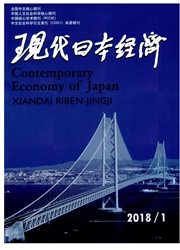

 中文摘要:
中文摘要:
1980年代是美国在传统的贸易政策之外日益重视用货币和金融手段敲打日本的时期。在这一阶段,美国主要借助日元美元委员会、广场协议、贝克一宫泽会谈、卢浮官协议4个平台和机制,对日本采取双边谈判与多边协调并举、推动日本金融自由化与压迫日元升值并用的策略,在美日货币谈判的阶段性推进中收到了良好的效果。与在国际商品市场上公然“对美说不”不同,日本在对美货币谈判中无一不是以妥协和让步收场。追根溯源,奥秘在于美国塑造并控制着日本活动于其中的安全结构、金融结构、知识结构和贸易结构。从结构性权力的视角反思1980年代的美日货币谈判,对于当下的中国有着重要的启示意义。
 英文摘要:
英文摘要:
It is in the 1980s that U.S. increasingly emphasized using monetary and financial instruments to bash Japan except for traditional trade policy. During this period, U.S. used the Yen - Dollar Committee, Pla- za Accord, Baker - Miyazawa Meeting, and Louvre Accord as four main platforms to press Japan into financial liberalization and revaluing the yen against the dollar. By means of two strategies of bilateral negotiation and multilateral coordination, U.S. bashing worked well in the phased schedule of U. S. - Japan monetary negoti- ation. Different from its "saying no" to the United States in the international goods market, Japan finally com- promised on U. S. ideas. Tracing Origins, the secret lies in that U. S. shapes and regulates the safe structure, financial structure, knowledge structure and trade structure inside of which Japan's activities run. Reflecting on the U.S. -Japan monetary negotiation in the 1980s from the perspective of structural power has important implication for current China.
 同期刊论文项目
同期刊论文项目
 同项目期刊论文
同项目期刊论文
 期刊信息
期刊信息
